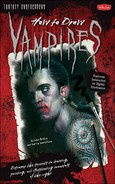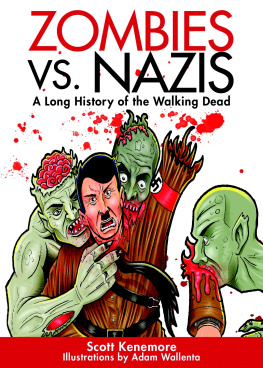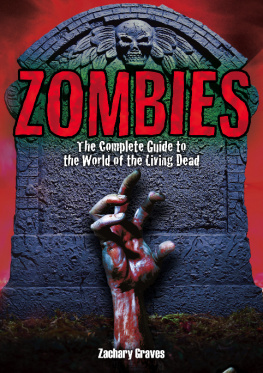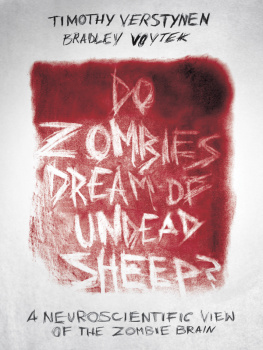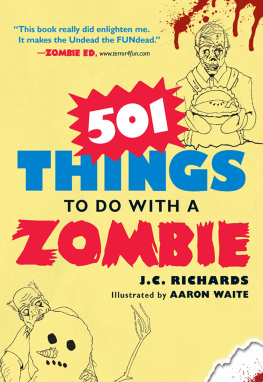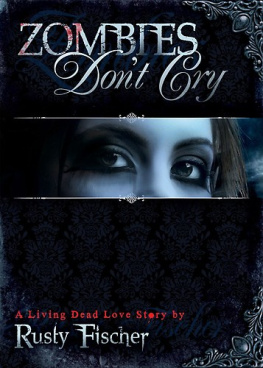FANTASY UNDERGROUND
How to Draw
ZOMBIES
by Mike Butkus and Merrie Destefano

2010, 2011 Walter Foster Publishing, Inc.
Artwork 2010 Mike Butkus. All rights reserved.
Walter Foster is a registered trademark.
Project Manager: Elizabeth Gilbert
Designer: Shelley Baugh
Production Design: Debbie Aiken
Production Management: Lawrence Marquez and Nicole Szawlowski
Digital edition: 978-1-61059-861-3
Softcover edition: 978-1-60058-197-7
This book has been produced to aid the aspiring artist. Reproduction of work for study or finished art is permissible. Any art produced or photomechanically reproduced from this publication for commercial purposes is forbidden without written consent from the publisher, Walter Foster Publishing, Inc.
Printed in China.
1 3 5 7 9 10 8 6 4 2


The zombie: to know him is to fear him.
He travels in packs, hungers for human flesh, and generally signifies the end of life as we know it. Like a scene from a 1960s horror film, his crowd of the undead appears out of nowhere. It shambles closer, revealing sunken eyes, broken teeth, and moon-pale skin that crumbles and peels away much too easily. Somehow these monsters manage to shuffle along despite missing fingers or limbs. A foot might be turned sideways or an ear might be hanging lopsided, but it doesnt matter. These creatures dont feel pain. They dont even communicate with one another. And if you think theyre ambling along without direction, youre wrong.
Theyre on a mission; theyre insatiably hungry.
And theyd love to add you to the menu.
Youve just entered The Fantasy Underground, a land where nightmares emerge from the mists of imagination, a place where dark creatures are born, the ultimate playground where youll learn how to add your own thumbprint to the ever-changing zombie legend. Whether youre aching to learn how to draw these monsters or hoping to brush up on zombie folklore or planning to write your own story about this popular monster, this is the right place to be. All the information, inspiration, and instruction you need is right here.
But consider yourself warned. You should probably read this book with all the lights turned on, and all the windows and doors locked. Because the zombies are loose.
And the latest rumor is theyre hungry.



The Nightmare Begins
They were humans once, these beasts that populate the cinema screen, the modern novel, and the occasional nightmare. They lived, they laughed, they loved, they diedthen a legendary plot twist came along: they didnt stay in the grave. They came back with a hunger and a vengeance.
They became zombies.
Risen from cemeteries and tombs, these are the walking dead.

If this mythic monster keeps you awake at night, its probably because it contains slivers of all the scariest legends. The zombie has been pieced together, a la Frankensteins monster, over thousands of years. Swathed in tattered burial clothes, the zombie embodies our collective memories of ancestral worship and our fear of death. It has walked through the fog-shrouded history of England, Germany, Romania, Iceland, Brazil, Haiti, West Africa, and the United States before reaching the cinematic screen in George Romeros 1968 film, Night of the Living Dead. You might think these creatures first launched into the public arena in the 1932 movie, White Zombie, starring Bla Lugosi, or the 1936 film, Revolt of the Zombies. But in truth, the macabre roots of the zombie legend began long, long ago, in an age when all our stories were told in whispers, when men and women crouched in fear of the capricious gods they worshipped.
Back to the Past
The zombie legend began with legendary beings: the gods of ancient Greece, Egypt, and Sumeria. In the ancient world, it was believed that only a god could travel the distance from death to life. Like forbidden fruit, this was not the stuff of mortals. In Greek legends, love drove Orpheus on his journey to the underworld, where he tried to rescue his dead wife, Eurydice. He almost succeeded in bringing her back but failed by disobeying Hades orders and glancing back at his wife before she crossed into the upper world. A somewhat similar Egyptian love-story-wrapped-in-myth tells of the god Osiris, murdered by his brother Set, then magically resurrected by his sister and wife, Isis. As time passed and this story was retold, it metamorphosed, first granting immortality to Egyptian kings, and then later, in the New Kingdom era (16th century B.C. to the 11th century B.C.) to all people who knew and performed the proper rituals.
This is the twisted path legends often take, changing slightly with each retelling.
As time passed, stories began to spread throughout the world about others who had returned from the dead. From the Sumerian tales of the god/king Tammuz rescued from the underworld by Inanna to the Hebrew Old Testament stories of Elijah and Elisha raising children from the dead to the Celtic ceremonial slaying of an aging king in the belief that his spirit would then inhabit a younger king, death was now seen as a door that could swing both ways.
Unfortunately, once it began to swing open, what walked through wasnt always friendly.
Common Ancestors
Today, those of us living in the Western world view ghosts as insubstantial and without substance. But this wasnt always the case. This particular viewpoint of spirits didnt become popular until the Victorian era. Before that, the returning dead were believed to be corporeal creatures with the ability to do harm or goodalthough they seemed to opt for harm more often.
Next page

